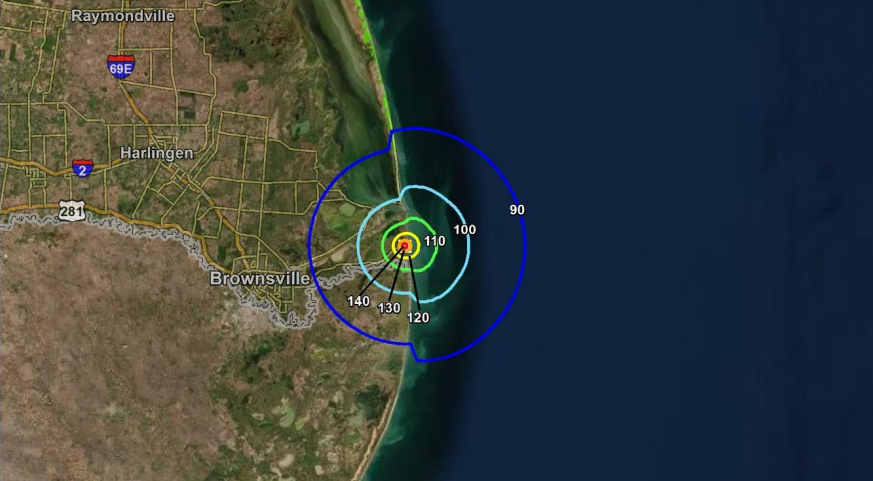Normally, if the soundwaves are omnidirectional in three-dimensional space, the power of the sound will decay with $1/r^2$, where '$r$' is the distance from the source of the sound to the listener. However, if the sound is confined within a waveguide its rate of decay versus distance will be slower. The ground, ocean, and cloud cover create an imperfect waveguide for the sound of a rocket. But if the ground, water, and clouds were perfect reflectors then theoretically the sound would begin to spread out more and more within a plane. The decay rate will begin to approach $1/r$.
But, at the risk of being down-voted by flat-earthers, the earth is not flat, so as the sound travels around the earth its rate of decay drops further. At the point where it has traveled 1/4 of the way around the earth, it is no longer spreading out. At this point, all of the sound is traveling in the same direction and it is (again theoretically) confined within an annular region bounded by the ground or ocean below and the clouds above. From this point on, the sound will become more concentrated until at the exact opposite side of the planet from the launch site (the antipodal point), it will reach a local maximum in intensity - again theoretically.
In practice, there is some evidence to support this. The eruption of Krakatoa in 1883 was heard 4800 km away and recorded by baraographs around the world. According to Wikipedia
Several barographs recorded the wave seven times over the course of five days: four times with the wave travelling away from the volcano to its antipodal point, and three times travelling back to the volcano the wave rounded the globe three and a half times.
Now the sound of Krakatoa was estimated to be 310dB SPL.
Starship's loudness was studied by the FAA.

You can observe that the distance between the colored rings increases as the distance increases. I think this is due to the shift from $1/r^2$ behavior to $1/r$ behavior. You will also observe that the sound travels further over water than over land.
The report provided lots of different simulation results, so it's probably worth giving it a thorough read if you want to understand this well.

However, if we use the above image as a representative example, we can see that the 100 dB and 90 dB rings are about 27 miles apart. Zero dB is defined to be the threshold of human hearing.

If we assume that the 80, 70, etc. rings are spaced the same as the 100-90 rings, it would still be possible to hear the sound of the launch if you were out to sea at a distance of 300 miles, or around 482 km. But the spacing of the rings might continue to increase for a while longer, in which case you would be able to hear the launch from even further away.
Given what we know about Krakatoa, it would be interesting to learn whether it would be possible for someone stationed at Starbase's antipodal point (which is in the middle of the Indian Ocean) to hear the sound of the launch. I suspect that it would be possible to record the sound there - with a sensitive enough microphone.


